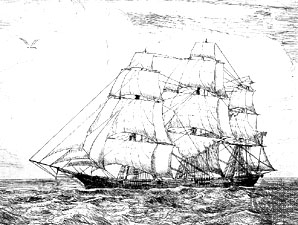
May not look right in Firefox Browsers. Press F11 for a better view.
Slideshow of 4 pictures. The 1st pic is the section of the Mall between the Wheler Club and Gandhi Bagh ( Delhi to the left Hills to the right ) .The other pictures are further to the East on the Mall.
A Soldier guarding a mess gate with Field guns surrounded by flower beds, is one of the more eye-catching sights on the Mall. The Field gun is made in 1956. It is called a Field gun because it could never miss a field. Try aiming it at anything else and the battle is over. Now it is best located at the gates of a mess and directed at the main enemy - civilians. An informed army person mentioned that this is not correct. The real reason is that 'field' is a shortened form of 'Battlefield'. This makes sense, as it helps to distinguish this from others meant for friendly indoor use .
A tablet closeby says that this house was occupied by the joint magistrate called Captain Cookson during the 1857 mutiny.
Note: The 'Captain' refers to a sea Captain not an army Captain. They would very often join the PWD and become land lubbers. A descendant (who passed away in 1999) of a Captain Rose used to proudly draw attention to the fact that he was a part time pirate.
The Mall was laid around 1880. The cantonment* was created by 'renting' land ( I am sure more than a little arm twisting was used ) which was under active cultivation by farmers. Some were given rent and some compensation equivalent to their income from the farm. This is the reason defence is not in possession of a single sale deed, and relies on an obscure CGO (Council General Order - does not matter that there is no Council General now :) ) to claim land it does not possess as its own.
British legacies maybe criticised vehemently in various innocuous niches ( media ), but in the administration they are still regarded with obsequious reverence. Talking of Colonial leftovers the invisible ones are the most pernicious. Want to check out if the East India Company is still hard at work acquiring land to grow Opium. Go to the Defence Estate Officers office and ask for some very ordinary permission. You will be asked to sign a paper saying that the land on which your house exists belongs to the Government. Mischief which has been going on for over a century. This is the done thing, if the British did it surely we can. One can safely say that a good part of the defence budget goes in mere maintenance of cantonments. Infact the barriers have increased from the time the British left. Remember that after 1857 the British perceived a real and present danger from the local population. One assumes this does not apply to the Indian Army.
What is a cantonment? How did they appear in India? Are they still relevant? Click here for a very well investigated write-up.

The Mall again, to the East. Around 1901 a British collector wrote that this was " one of the finest roads in the country". Poetic perhaps but there was no Marine drive , Raj Path or Jan Path at that time. Speaking of Roads it is quite obvious that Meerut predates Euclid. I mean the roads have been laid out before they discovered straight lines and right angles. See the BegumPul area, about 7 roads converge roughly towards the bridge. Move a little further North about 100 Meters before Sophia School starts and again a large number of roads converge not to a well defined point but towards an irregular area. It is very likely that one of these roads comes from Rome.
Some say few roads in the town are straight. That can be safely ignored, because they say the same sort of mean things about its people. There is no harm if you count the change when you buy something, though. They say a mistake rarely favours the customer. As a precaution it is OK to count the money you get from the ATMs too.

This is the road leading to St. John's Garrison Church
. .The Church is located in the Meerut cantonment . Cantonment construction and planning started in 1806 under a Major Penson , after this area came under British rule in 1803. Sunil Khilnani in his book The Idea of India states that 170 cantonments were made and these were later connected by railways when they arrived on the scene around 1860. Cantonments of course were the main instruments for the spread of colonisation. Large areas ( called Garrisons) were marked out "for the troops" and these were utilised wherever the East India Company had interests - for example in the famous Opium Wars in China around 1839 . This blanket acquisition of land , without regard for title deeds etc. has left problems even for today, and is the main reason for the dilapidated state of cantonments, where one requires 'permissions' even for repairing broken down boundary walls. However there seems to be no reason for the pathetic maintenance of structures 'owned' by the army. 'Defence' does not want to release its gains illegally bequeathed to it by the East India Company The Crown took over after the Mutiny in 1857 and the East India Company was dissolved on Jan 1, 1874 when the East India Stock Dividend Redemption Act came into effect. The strength of the East India Army when it went under the crown was 24000!! today it is 1,250,000.

The Cantonments stay in the same locations which were more suitable for the machinations of the East India Company . After Independence the British Indian Army was renamed to simply the Indian Army. A plaque in memory of the British Indian Army is placed in the St. Paul's Cathedral in London.
It seems this fact( the demise ) was ignored here. So the old attitudes still survive. And rarely is Independence taken into account. I mean the change from a conquered country to a defended country.
That our rules and laws are descended from a Government which was a business (The EAST INDIA COMPANY) and a business which never completely became a Government has enormous implications for today. All our regulations are a legacy of the British colonial system ( read advantage colonisers). We have a revenue priority system rather than a citizen priority one . People can die , industries can close , but there should not be a revenue loss of even Rs. 5/- . This is also the reason for a long list of permissions and 'authorisations' from sundry offices - a stranglehold which may never be released. People can die but the authorities should not suffer the smallest loss ( unless it is in the form of embezzlement ). We forget that the very nature of good Government is altruistic.
Who sees the Variety and not the Unity, wanders on from death to death.
- Katha Upanishads
 Hi ! Do write back with reactions /suggestions /objections...
Hi ! Do write back with reactions /suggestions /objections...

